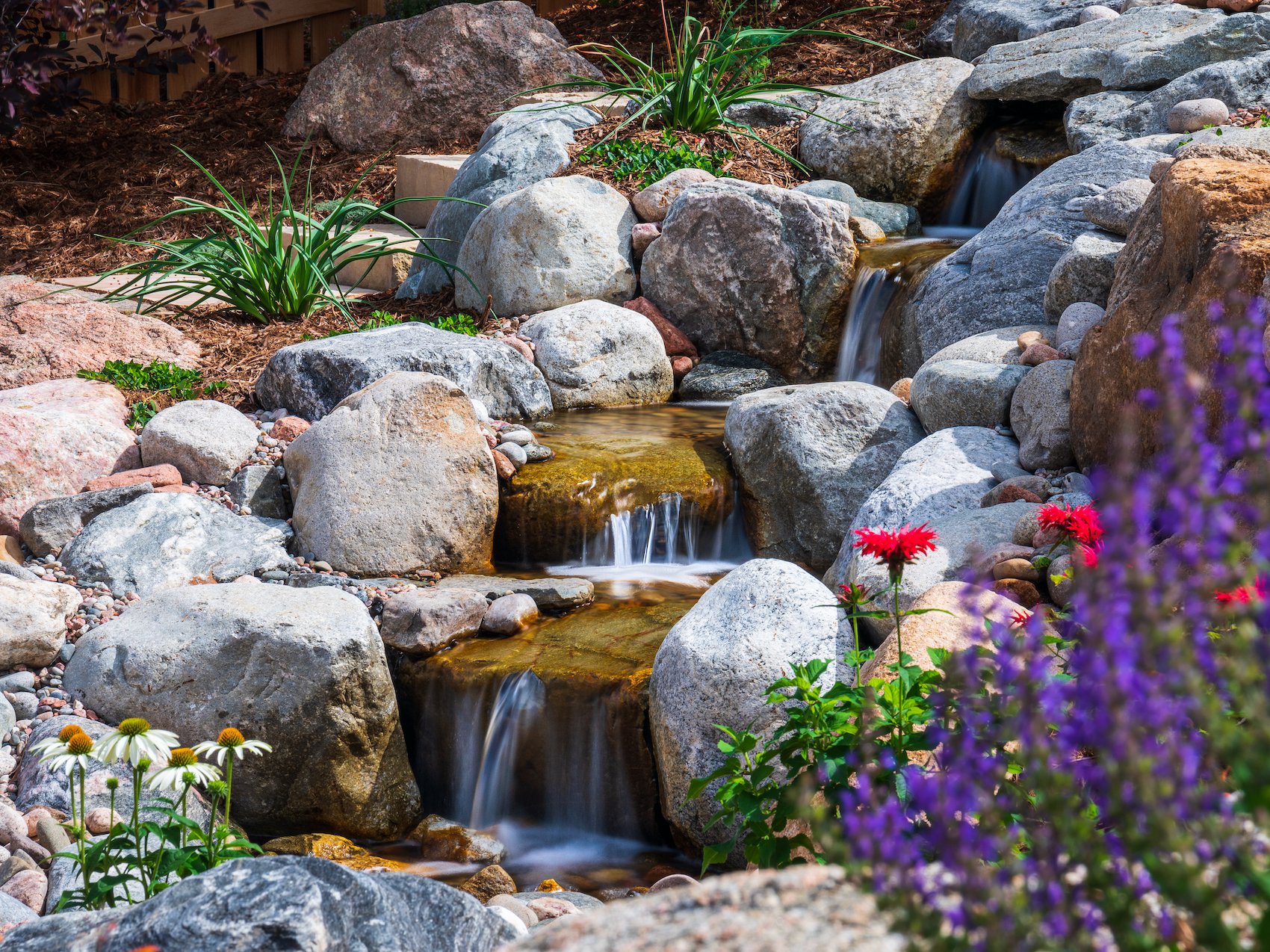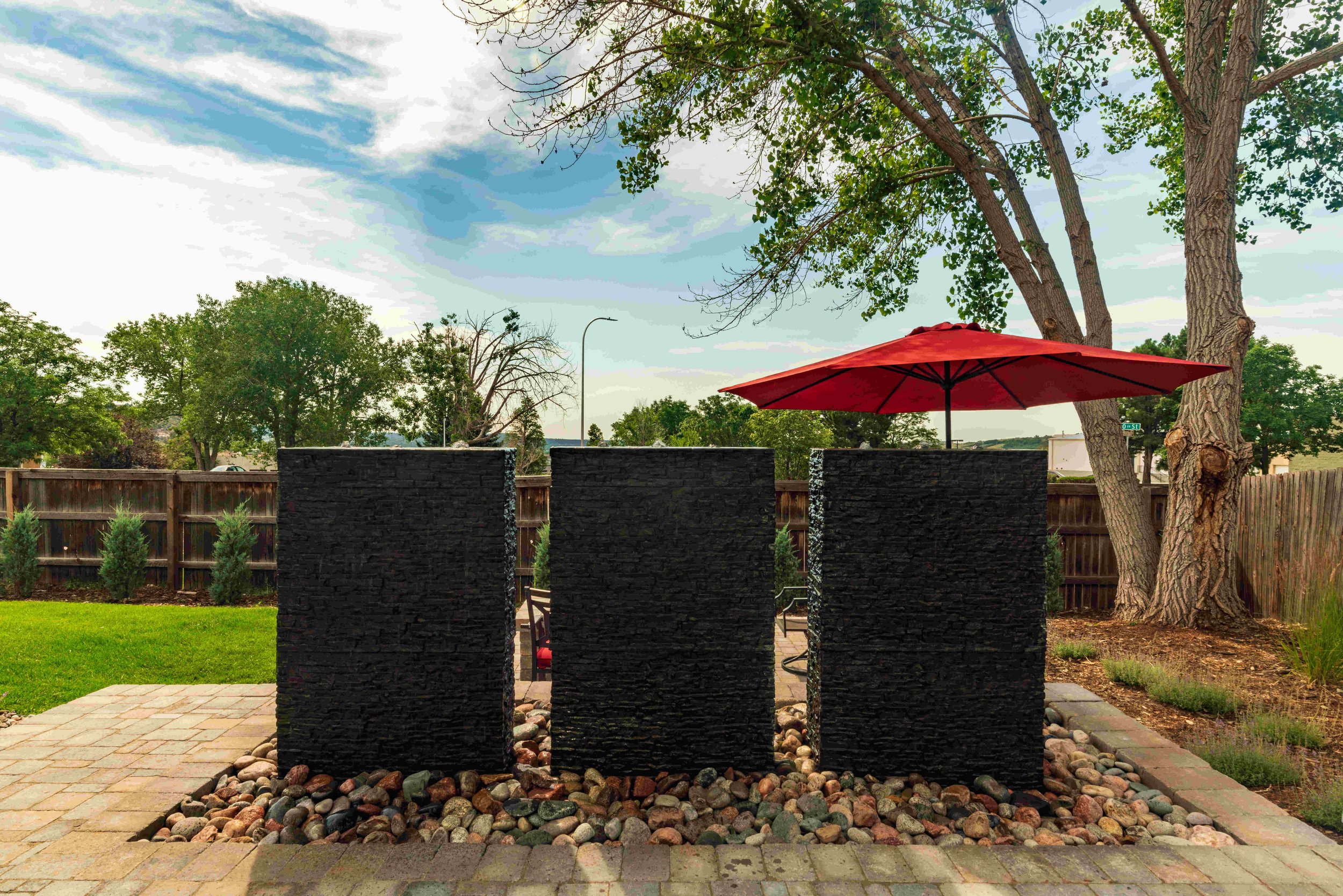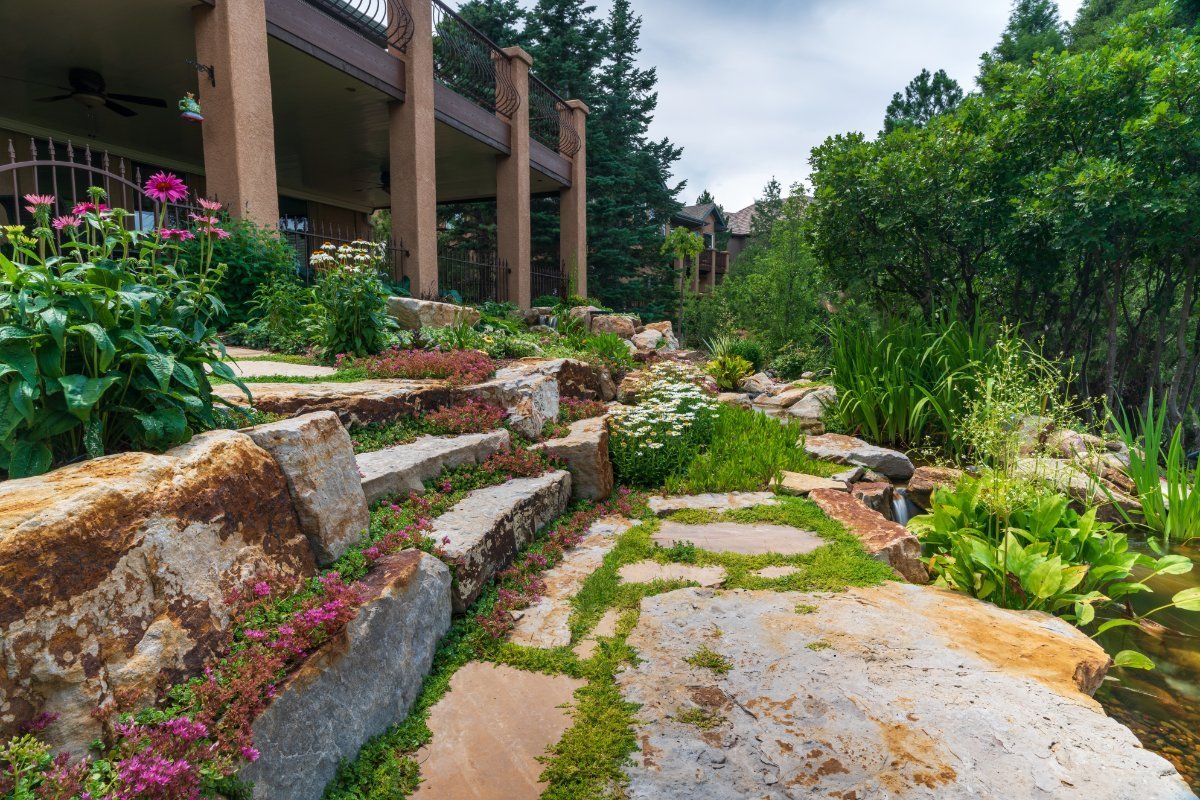
Outdoor Insights
Explore our blog to discover outdoor living ideas to make the most out of your property and gain industry insight from our award-winning team.
How to Make the Most of Outdoor Living With Landscaping & Backyard Design in Castle Rock, CO
Welcome to outdoor living in Castle Rock, Colorado. Here, stunning mountain views, expansive properties, and high-end homes offer the perfect opportunity to create outdoor spaces that feel luxurious, personal, and entirely seamless with the way you live. When it comes to landscaping and backyard design in Castle Rock, CO, it is not about trends or generic solutions. It is about thoughtful design, quality craftsmanship, and creating environments where you want to spend your time. This is where our expert team comes in. From initial consultation to final walkthrough, we take care of the design, planning, and construction.
What to Expect From Routine Pond Maintenance in Parker and Highlands Ranch, CO
Owning a pond in Parker, CO, or Highlands Ranch, CO, is more than just a backyard feature. It's a serene retreat that enhances your outdoor living experience. However, regular pond maintenance is essential to maintain its beauty and functionality. This comprehensive guide will walk you through what to expect from professional pond maintenance services, ensuring your aquatic oasis remains pristine year-round. With expert care, your pond becomes a reliable and worry-free extension of your landscape. You get to enjoy the peaceful ambiance while we handle all the work behind the scenes.
Create a Backyard Oasis With a Custom Patio and Pond in Parker & Highlands Ranch, CO
Parker and Highlands Ranch, Colorado, are known for their stunning landscapes, sunny weather, and upscale homes, making them the perfect locations for creating a backyard oasis. Imagine a space that enhances your lifestyle, blending natural beauty with outdoor functionality. A custom patio and pond can elevate your outdoor area, offering a serene escape, a place for entertaining, or a retreat for quiet relaxation. At Hiner Outdoor Living, we specialize in transforming ordinary backyards into extraordinary outdoor spaces.
How a Pergola Can Elevate Your Outdoor Living Space in Castle Rock and Greenwood Village, CO
A pergola adds structure and character to outdoor living spaces in Castle Rock, CO & Greenwood Village, CO, turning a backyard into a polished retreat. More than just shade, it defines areas for lounging, dining, or entertaining while seamlessly integrating with other outdoor features. Whether paired with a patio, fire pit, or water features, a pergola creates a cohesive, inviting space. With the right design, it enhances comfort and style, making the backyard feel intentional and refined.
Backyard Waterfall Designs: Best Inspirations for Parker and Castle Rock, CO
A backyard waterfall can transform an ordinary outdoor space into a luxury retreat, bringing movement, sound, and a natural aesthetic to your landscape. Whether it's a cascading feature nestled into lush greenery or a sleek, modern waterfall flowing into a pool, the right design enhances relaxation and adds a high-end touch to your property.
Wind-Resistant Landscaping for Your Parker and Highlands Ranch, CO Outdoor Space
Windy days in Parker and Highlands Ranch, CO, aren’t just a casual breeze wafting through your backyard—they’re a full-blown personality trait of the region. If you’ve ever watched a patio chair take off like it’s auditioning for a NASA launch, you know exactly what that feels like. These persistent gusts can disrupt outdoor living spaces, making it challenging to maintain the polished, inviting atmosphere you’ve wanted. With wind-resistant landscaping, a skilled landscape professional can transform those wild winds into a mere backdrop to a sturdy and stunning outdoor retreat.
Create Your Ideal Shaded Retreat With a Custom Pergola in Colorado Springs and Black Forest, CO
A pergola can transform your outdoor space into a relaxing retreat, providing shade and style to enjoy year-round. Whether you are planning to enhance your space in Colorado Springs, CO, or Black Forest, CO, a custom pergola offers endless opportunities to create a comfortable and functional area for dining, relaxing, or entertaining. With thoughtful design, your pergola can become the centerpiece of a serene and inviting outdoor environment.
Host Gourmet BBQs and Family Feasts With a Stunning Outdoor Kitchen in Castle Rock, CO
A well-designed outdoor kitchen can transform your space into a culinary haven for hosting gourmet BBQs and family feasts. Whether you are preparing a casual lunch or an elaborate dinner, an outdoor kitchen in Castle Rock, CO, creates an inviting environment for both cooking and entertaining. With the right materials and layout, you can elevate your gatherings while enjoying the comfort of your own home.
Landscape Design in Monument and Black Forest, CO: Create Your Ideal Outdoor Space for Relaxing Walks
Thoughtful landscape design can turn your outdoor space into a haven for relaxation and enjoyment. With well-planned features, you can create an inviting area that encourages peaceful walks and quiet reflection. Whether you are in need of expert landscape design in Monument or Black Forest, CO, there are plenty of ways to shape your surroundings into a serene retreat. From concrete accents to custom walkways, every detail can contribute to your vision of an ideal space.
Create a Serene Outdoor Escape for Morning Coffee With a Beautiful Water Fountain in Colorado Springs, CO
Transforming your outdoor space into a peaceful retreat begins with the soothing presence of a water fountain in Colorado Springs, CO. Skilled professionals can design and install a custom water feature that turns your backyard into the perfect setting for your morning coffee. Thoughtfully crafted with premium materials, a water fountain can blend seamlessly with your landscape while providing a tranquil focal point.
Expert Landscape Design in Castle Rock, CO: Host Unforgettable Outdoor Dinner Parties With a Stunning Patio
Transforming your backyard into a luxurious retreat begins with expert landscape design and patio in Castle Rock, CO. Creating an elegant space for hosting outdoor dinner parties requires a detail-oriented approach, premium materials, and a highly skilled team. With the right expertise, your outdoor space can be transformed into the perfect setting for unforgettable gatherings.
Year-Round Green: How Colorado Springs, CO, Landscaping and Artificial Turf Experts Transform Your Backyard
If you’re looking for vibrant, green beauty that lasts through the seasons, consider the benefits of a well-designed landscaping and artificial turf solution. Landscaping and artificial turf in Colorado Springs, CO, can give you a lush, maintenance-friendly yard that holds its charm even as temperatures fluctuate. Here’s how a thoughtfully crafted landscape combined with artificial turf can transform your outdoor space into a year-round oasis.
Landscape Design in Colorado Springs, CO: Transform Your Backyard With a Stylish Patio for Game Nights
Transforming your outdoor space into a hub for game nights and gatherings is made easy with thoughtful landscape design and a patio in Colorado Springs, CO. A well-designed patio gives you a dedicated area to entertain, with room for seating, lighting, and everything you need to create an inviting atmosphere for friends and family. Here are some ideas to make your patio the perfect spot for unforgettable game nights.
S’mores Under the Stars: Designing the Perfect Fire Pit for Cozy Nights in Colorado Springs, CO
Creating a warm and inviting outdoor space begins with a fire pit in Colorado Springs, CO. This feature enhances your backyard's aesthetic and serves as a focal point for gatherings with family and friends. A well-designed fire pit transforms ordinary evenings into cozy adventures, providing the perfect setting for making s’mores, sharing stories, and enjoying the beauty of nature under the stars.
5 Ways Landscaping and Artificial Turf in Castle Rock, CO, Create a Year-Round Play Area for Families
A well-designed outdoor space can provide a year-round play area for families, especially when combining thoughtful landscaping and artificial turf. In Castle Rock, CO, this combination offers durability and versatility, ensuring that the outdoor space remains functional throughout all seasons. Here are five ways landscaping and artificial turf can transform your outdoor space into a perfect play area for families.
Shaded Outdoor Dining: Designing a Pergola for Outdoor Meals in Colorado Springs, CO
A pergola in Colorado Springs, CO, creates the perfect shaded retreat for outdoor dining, offering a stylish and functional space to enjoy meals in the fresh air. Expert landscape services specialize in designing and installing pergolas that enhance the beauty of your backyard while providing the necessary shelter from the sun. This addition transforms the outdoor area into a cozy gathering spot where family and friends can come together for unforgettable meals.
Creating a Cozy Patio Lounge for Relaxing Evenings in Castle Rock, CO
As the sun sets over the mountains, there’s no better way to enjoy the cool evening air than from the comfort of a cozy patio lounge. With the help of a landscape designer in Castle Rock, CO, you can create a relaxing, stylish patio lounge that offers both comfort and charm, enhancing your outdoor living experience. Here’s how experts can design and build the ideal space for those quiet, tranquil evenings.
Innovative Landscaping Ideas to Create a Private, Secluded Retreat in Monument and Black Forest, CO
By hiring expert landscaping professionals in Monument and Black Forest, CO, you’ll create a meticulously designed private retreat right in your own backyard. Imagine stepping outside and finding yourself in a serene, secluded space designed exclusively for relaxation and enjoyment, all without lifting a finger.
Multi-Functional Landscape Design Features for Small Backyards in Monument and Colorado Springs, CO
Creating a functional and beautiful backyard in a small space requires an expertly thoughtful approach to landscape design. For homeowners in Monument and Colorado Springs, CO, hiring professionals to integrate multi-functional landscape design features into a compact outdoor area can transform your backyard into a versatile and aesthetically pleasing retreat. By combining elements that serve multiple purposes, you can maximize the use of your space while maintaining an elegant and cohesive design.
Three Premium Artificial Turf Options for Play Areas in Your Castle Rock, CO Outdoor Space
Transforming your backyard into a vibrant play area starts with selecting the right artificial turf. In Castle Rock, CO, where the weather can vary, having a versatile and durable surface for your outdoor space is essential. A landscape professional can guide you in making the right choice, and you can enjoy a lush, green lawn all year round, regardless of the climate. Quality artificial turf offers visual appeal and practical benefits, making it an ideal choice for creating a functional and inviting outdoor space. A landscape professional can ensure that artificial turf options can turn your backyard into a perfect playground for family fun and relaxation.
View All Articles
-
June 2025
- Jun 13, 2025 How to Make the Most of Outdoor Living With Landscaping & Backyard Design in Castle Rock, CO Jun 13, 2025
-
May 2025
- May 24, 2025 What to Expect From Routine Pond Maintenance in Parker and Highlands Ranch, CO May 24, 2025
-
April 2025
- Apr 7, 2025 Create a Backyard Oasis With a Custom Patio and Pond in Parker & Highlands Ranch, CO Apr 7, 2025
-
March 2025
- Mar 10, 2025 How a Pergola Can Elevate Your Outdoor Living Space in Castle Rock and Greenwood Village, CO Mar 10, 2025
-
February 2025
- Feb 10, 2025 Backyard Waterfall Designs: Best Inspirations for Parker and Castle Rock, CO Feb 10, 2025
-
January 2025
- Jan 28, 2025 Wind-Resistant Landscaping for Your Parker and Highlands Ranch, CO Outdoor Space Jan 28, 2025
-
December 2024
- Dec 28, 2024 Create Your Ideal Shaded Retreat With a Custom Pergola in Colorado Springs and Black Forest, CO Dec 28, 2024
- Dec 16, 2024 Host Gourmet BBQs and Family Feasts With a Stunning Outdoor Kitchen in Castle Rock, CO Dec 16, 2024
- Dec 14, 2024 Landscape Design in Monument and Black Forest, CO: Create Your Ideal Outdoor Space for Relaxing Walks Dec 14, 2024
-
November 2024
- Nov 26, 2024 Create a Serene Outdoor Escape for Morning Coffee With a Beautiful Water Fountain in Colorado Springs, CO Nov 26, 2024
- Nov 22, 2024 Expert Landscape Design in Castle Rock, CO: Host Unforgettable Outdoor Dinner Parties With a Stunning Patio Nov 22, 2024
- Nov 14, 2024 Year-Round Green: How Colorado Springs, CO, Landscaping and Artificial Turf Experts Transform Your Backyard Nov 14, 2024
-
October 2024
- Oct 29, 2024 Landscape Design in Colorado Springs, CO: Transform Your Backyard With a Stylish Patio for Game Nights Oct 29, 2024
- Oct 18, 2024 S’mores Under the Stars: Designing the Perfect Fire Pit for Cozy Nights in Colorado Springs, CO Oct 18, 2024
- Oct 16, 2024 5 Ways Landscaping and Artificial Turf in Castle Rock, CO, Create a Year-Round Play Area for Families Oct 16, 2024
-
September 2024
- Sep 25, 2024 Shaded Outdoor Dining: Designing a Pergola for Outdoor Meals in Colorado Springs, CO Sep 25, 2024
- Sep 21, 2024 Creating a Cozy Patio Lounge for Relaxing Evenings in Castle Rock, CO Sep 21, 2024
- Sep 5, 2024 Innovative Landscaping Ideas to Create a Private, Secluded Retreat in Monument and Black Forest, CO Sep 5, 2024
-
August 2024
- Aug 21, 2024 Multi-Functional Landscape Design Features for Small Backyards in Monument and Colorado Springs, CO Aug 21, 2024
- Aug 11, 2024 Three Premium Artificial Turf Options for Play Areas in Your Castle Rock, CO Outdoor Space Aug 11, 2024
- Aug 5, 2024 What Are Microclimates in Monument and Colorado Springs, CO, and How Do They Affect Your Landscaping Aug 5, 2024
-
July 2024
- Jul 30, 2024 Colorado Springs, CO: Create a Stunning Patio for Endless Summer Nights Jul 30, 2024
- Jul 18, 2024 Enjoy Year-Round Greenery: Artificial Turf Solutions in Colorado Springs, CO Jul 18, 2024
- Jul 11, 2024 Reimagine Outdoor Living With Top-Tier Landscaping and Landscape Design in Castle Rock, CO Jul 11, 2024
-
June 2024
- Jun 27, 2024 Castle Pines and Monument, CO: Discover the Convenience and Beauty of Artificial Turf Jun 27, 2024
- Jun 18, 2024 Make Every Day a Staycation: Gorgeous Pergola and Patio Designs in Castle Pines, CO Jun 18, 2024
- Jun 12, 2024 Experience the Best in Landscaping and Landscape Design for Your Colorado Springs, CO Home Jun 12, 2024
-
May 2024
- May 27, 2024 Colorado Springs, CO: Gourmet Outdoor Kitchen Meets Serene Water Fountain for Epic Home Entertaining May 27, 2024
- May 18, 2024 Seamless Integration: Pergola and Artificial Turf Solutions for Your Castle Rock, CO Home May 18, 2024
- May 9, 2024 Elevate Your Castle Rock, CO Property With Premier Landscaping and Landscape Design Services May 9, 2024
-
April 2024
- Apr 22, 2024 Maximize Your Outdoor Enjoyment With Artificial Turf in Colorado Springs and Castle Pines, CO Apr 22, 2024
- Apr 11, 2024 Creating Your Outdoor Sanctuary: Custom Landscaping Solutions in Colorado Springs, CO Apr 11, 2024
- Apr 3, 2024 Tailoring Landscape Design to the Unique Terrain of Black Forest and Castle Rock, CO Apr 3, 2024
-
March 2024
- Mar 26, 2024 Top Landscaping Trends for Monument and Castle Pines, CO Homes Mar 26, 2024
- Mar 18, 2024 How a Patio and Fire Pit Can Elevate Your Colorado Springs, CO Outdoor Experience Mar 18, 2024
- Mar 9, 2024 The Benefits of Integrating Artificial Turf Into 'Landscaping Near Me' in Castle Rock, CO Mar 9, 2024
-
February 2024
- Feb 29, 2024 Why Castle Rock, CO Homes Love the Blend of Landscape Design and a Pergola Feb 29, 2024
- Feb 20, 2024 Your Guide to Personalized Landscape Design and ‘Landscaping Near Me’ in Colorado Springs, CO Feb 20, 2024
- Feb 10, 2024 How a Pergola and Patio Can Redefine Outdoor Living in Monument, CO Feb 10, 2024
-
January 2024
- Jan 31, 2024 Personalized Landscape Design to Transform Your Monument, CO Property Jan 31, 2024
- Jan 20, 2024 Create a Cozy Backyard Haven With a Pergola and Fire Pit in Colorado Springs, CO Jan 20, 2024
- Jan 11, 2024 Landscaping Near Me: Custom Outdoor Solutions in Colorado Springs and Castle Rock CO Jan 11, 2024
-
December 2023
- Dec 30, 2023 Transform Your Outdoor Living with a Custom Patio Design in Colorado Springs and Castle Rock Dec 30, 2023
- Dec 21, 2023 The Benefits of Incorporating Artificial Turf in Your Castle Pines, CO Landscape Design Dec 21, 2023
- Dec 10, 2023 The Art of Integrating a Pergola in Landscape Designs in Castle Pines and Black Forest, CO Dec 10, 2023
-
November 2023
- Nov 29, 2023 Enjoy a Shady Pergola and an Always Green Yard with Artificial Turf in the Castle Rock, CO Areas Nov 29, 2023
- Nov 15, 2023 Unsure About Artificial Turf Around a Colorado Springs, CO Patio? These Designs Will Convince You Nov 15, 2023
- Nov 6, 2023 Hoping For Your Colorado Springs or Castle Rock, CO Dream Yard? See Landscape Designs From the Pros Nov 6, 2023
-
October 2023
- Oct 30, 2023 Enjoy More Time on a Colorado Springs or Castle Rock, CO Paver Patio with a Pergola for Shade Oct 30, 2023
- Oct 19, 2023 Achieve a Green Lawn All Year with Artificial Turf in Colorado Springs or Castle Rock, CO Landscapes Oct 19, 2023
- Oct 12, 2023 Amaze the Neighbors with a New Landscape Design in Your Castle Rock or Colorado Springs, CO Property Oct 12, 2023
-
September 2023
- Sep 15, 2023 Enjoy an Aquatic Oasis With a Landscape Design that Includes a Pond in the Northgate, CO Area Sep 15, 2023
-
August 2023
- Aug 31, 2023 Ignite Your Outdoor Living With Style and Comfort Alongside a Fire Pit in the Briargate and Castle Rock, CO Area Aug 31, 2023
- Aug 25, 2023 Tips for an Ultimate Gathering Space on a Patio in The Pinery and Gleneagle, CO Areas Aug 25, 2023
- Aug 11, 2023 Enjoy a Soothing Oasis With a Pond and Water Fountain in the Northgate, CO Area Aug 11, 2023
-
July 2023
- Jul 28, 2023 Here's Why a Pergola Is the Perfect Shade Solution for Your Patio in the Colorado Springs, CO Area Jul 28, 2023
- Jul 21, 2023 Maximize Your Entertainment Potential by Including an Outdoor Kitchen in Your Landscape Design in the Castle Pines, CO Areas Jul 21, 2023
- Jul 19, 2023 Why Artificial Turf Is Growing in Popularity for Outdoor Spaces in the Black Forest and Briargate, CO Areas Jul 19, 2023
-
January 2023
- Jan 26, 2023 What Are Fire Pits Used For? Jan 26, 2023
- Jan 6, 2023 3 Residential Landscaping Features You’ll Love Jan 6, 2023
-
December 2022
- Dec 16, 2022 Is A Pondless Waterfall Right For You? Dec 16, 2022
- Dec 8, 2022 How To Hardscape Your Backyard Dec 8, 2022
-
November 2022
- Nov 23, 2022 Is A Koi Fish Pond Right For You? Nov 23, 2022
- Nov 10, 2022 How Deep Should A Koi Pond Be? Nov 10, 2022




















